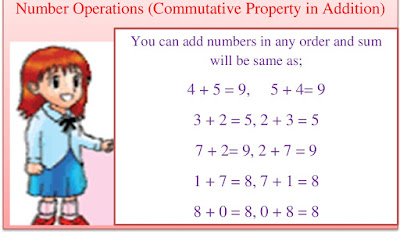Lesson Planning of Number Operations (Commutative Property) Subject Mathematics Grade II
Lesson Planning of Number Operations (Commutative Property)
Subject Mathematics
Grade II
Students` Learning Outcomes
- Verify commutative property with respect to addition (sum should not exceed 100).
Information for Teachers
- The word “commutative” comes from “commute” or “move around”, so the commutative property is the one that refers to moving numbers or variable around. It states that changing the order of addends does n`t change the sum, as; in case of addition, the rule is “a + b = b + a”; this means 2 + 3 = 3 + 2.
- While teaching the lesson, the teacher should also consult textbook wherein and whenever it is required.
Material / Resources
Writing board, chalk/marker, duster, pointer,
dice, 10 x 10 grid, number flashcards (1 digit)
Introduction
- Give some number flashcards (up to 3 digits numbers) to students. Ask them to pick any two cards and find the sum.
Development
|
Activity 1
|
|
Activity 2
|
Sum up / Conclusion
- The commutative property of addition tells us that the order in which 2 numbers are added does n`t change the sum of those 2 numbers.
- Ask students to define the sum of those 2 numbers.
- Ask students to define commutative property and take few examples.
Assessment
- Write few incomplete addition equations reflecting, commutative property w.r.t. addition to complete, e.g.
- 4+5= ___ +4,
3+6=6+_____,
3+_____=2+3
_____+7=7+4
- (These four variations should be included)
- Teacher is also required to involve the students in solving the problems given in the exercise at the end of unit/chapter.
Follow up Tasks
- Ask students to write 5 equations reflecting commutative property with respect to addition as home wor e.g. 1+3=3+2, 3+4=4+3, etc.





Comments
Post a Comment